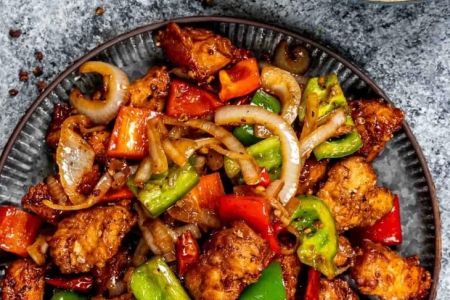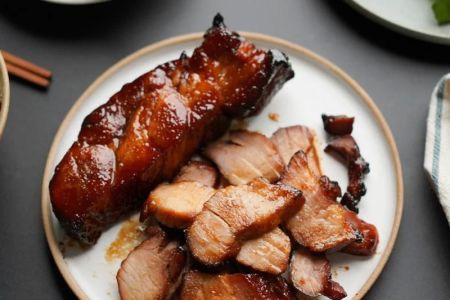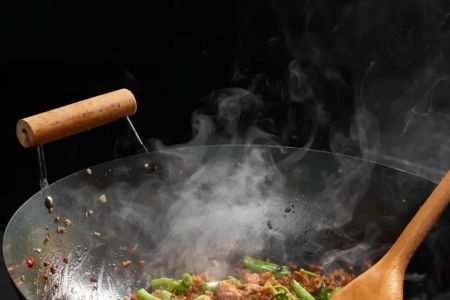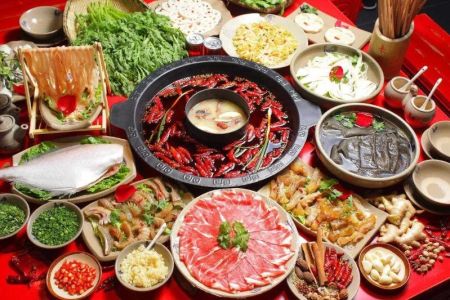Chinese Food Etiquette and Traditions: A Complete Guide
If you're planning to visit a Chinese restaurant or dine with Chinese friends or family, understanding the food etiquette and traditions is key. Growing up with a Chinese background, I have come to appreciate the subtleties that make a meal truly authentic. There’s so much more to Chinese dining than simply enjoying the food; it's about respect, history, and a sense of community. Let me walk you through some of the essential Chinese food etiquette and traditions that will ensure you’re not only well-prepared but also show respect for the rich culture behind the cuisine.
1. The Importance of Family and Sharing in Chinese Meals
One of the first things I learned about Chinese dining traditions is the importance of sharing. In Chinese culture, food is not just for personal consumption but a way to foster a sense of unity and togetherness. When dining at home or at a restaurant, it’s customary for dishes to be shared among everyone at the table. Large, communal platters are placed in the center, and everyone helps themselves by picking from different dishes. This sense of sharing symbolizes harmony and respect for each individual at the table.
1.1 The Significance of the Round Dining Table
The round dining table is a key feature of Chinese dining and represents unity and equality. This is unlike Western dining tables where individuals may sit at the head or at one end. At a round table, no one has a "head of the table" position, promoting equal participation from everyone. The turntable in the center, which is used to spin the dishes, is one of the most recognizable features of Chinese dining. It ensures that each person can reach the food easily, and it also fosters a feeling of connection between everyone at the table.
2. The Role of Chopsticks in Chinese Dining
Chopsticks are perhaps the most iconic aspect of Chinese dining, and there are many important etiquette rules surrounding their use. When I first started using chopsticks, I quickly learned that there are certain behaviors to avoid to ensure proper etiquette.
2.1 Don’t Stick Your Chopsticks Upright in Rice
One of the most important pieces of Chinese chopstick etiquette is not to stick them upright into a bowl of rice. This is considered disrespectful and symbolic of death, as incense sticks are often placed in a similar manner at funerals. It’s a simple yet powerful way to show respect for the food and the culture. Instead, chopsticks should always be laid horizontally across the edge of the bowl or placed in a designated chopstick rest.
2.2 Don’t Point or Wave Chopsticks
Another rule to keep in mind is not to point or wave chopsticks around while speaking. This is considered rude and can come off as disrespectful. Chopsticks are meant for eating, not for gesturing, so it’s important to keep them still when you're not using them. Similarly, avoid sticking your chopsticks into the food in a way that could disrupt the presentation, as it may be seen as careless or thoughtless.
3. The Art of Pouring Tea
Tea is an integral part of Chinese dining, and it’s often served before, during, and after a meal. In Chinese culture, pouring tea for others is seen as an act of hospitality and respect. When dining with family or friends, I’ve often been asked to pour tea for others as a sign of goodwill.
3.1 Pouring Tea for Others
When pouring tea, it's customary to pour for others before pouring for yourself. This shows respect and consideration for your dining companions. Additionally, if you’re pouring tea for someone senior to you in age or status, it’s polite to hold the teapot with both hands and slightly bow your head as a sign of respect. It’s a small gesture, but it demonstrates appreciation for the other person’s presence at the table.
3.2 Tapping the Table as a Gesture of Thanks
If someone pours tea for you, a traditional gesture of gratitude is to tap your fingers on the table. This is a subtle yet powerful way to thank the person who is pouring your tea. It’s an old Chinese custom, and although it may seem unusual to those unfamiliar with it, it holds great significance. I remember the first time I experienced it—it’s a charming gesture that brings a personal touch to the meal.
4. Eating with Respect: The Proper Way to Eat Chinese Food
Eating in Chinese culture is about more than just the food itself; it's also about the manners and respect shown while eating. I’ve learned that eating with proper etiquette reflects a person’s upbringing and respect for the host or chef.
4.1 Don’t Rush the Meal
In China, meals are meant to be enjoyed and savored, not rushed. It’s common to spend a considerable amount of time at the table, enjoying conversation, drinking tea, and appreciating the flavors of the meal. Unlike in the West, where meals are sometimes hurried due to busy schedules, Chinese meals are a time to relax and enjoy the company. I’ve found that slowing down and taking the time to savor each dish actually enhances the dining experience.
4.2 Use the Right Amount of Condiments
While it’s tempting to drown your food in soy sauce or chili paste, it’s important to be mindful of how much seasoning you use. In Chinese cuisine, balance is key. For example, when eating dim sum, I try to enjoy the flavors without overpowering them with too much soy sauce. It’s all about appreciating the delicate balance of flavors in each dish.
5. Dining Out in China: What You Need to Know
If you're dining at a traditional Chinese restaurant in China, there are additional etiquettes to keep in mind. One of the most important ones is not to tip. In Chinese culture, tipping is not expected, and in some cases, it can even be seen as insulting. This is a key difference compared to Western dining customs, where tipping is the norm. So, if you’re dining out in China, remember to enjoy your meal without the pressure of leaving a tip!
5.1 The Proper Way to Pay the Bill
When the meal is finished, it’s customary for the person who invited others to pay the bill. If you're the guest, it’s polite to offer to pay, but the host will typically insist on covering the cost. This shows generosity and hospitality, and it's a lovely way to conclude a meal. I’ve had experiences where the host would even try to subtly hide the check to ensure they could pay, which is a true display of their hospitality.






![Top Chinese Restaurants for Authentic Cantonese Cuisine in [Your City]](https://img.gochinarose.com/d33/2507/4157910400_450x300.webp)
